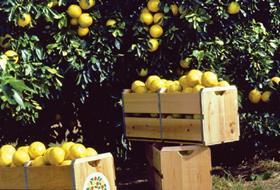
The first Florida grapefruit of the season was picked in early October and, according to sources, fruit sugars and juice levels are ahead of last year’s pace.
Due to a fairly dry summer leading up to the harvest, discolouring melanose infections are at a minimum, producing good fruit appearance. The diameter of this season’s grapefruit crop is posing some challenges, however.
“The industry is definitely fighting size this year,” admits Paul Genke of The Packers of Indian River. “We’ve been ‘spot-picking’ for fruit size 48s and larger and have been going through the grove blocks pretty fast. Hopefully some more rain and warm weather over the next several weeks will allow fruit to grow a little more.”
“It’s a difficult situation, “ agrees Robert Thomas of IMG Citrus. “We could leave the fruit on the trees several more weeks for additional growth, but you run the risk of not being able to adequately supply your customers. However, smaller-sized fruit typically means lower returns to the grower so we’re kind of between a rock and a hard place so far this season.”
Florida grapefruit shipments are lagging behind the pace of the previous two seasons. Through 18 October, the industry had shipped just under 297,000 cartons (19.3kg), compared to 583,000 cartons a year ago. Fruit sizing is no doubt part of the problem.
Japan remains the largest off-shore market for Florida grapefruit, importing 2.43m cartons last season compared to 2.9m in 2014-15 and 4.8m cartons during the 2011/12 campaign.
“Japan’s import volume keeps dropping every year,” says Thomas. “It’s partly due to their economy but also because there is less fruit available from Florida. The fact that we’ve got a smaller fruit size curve this year is a bit worrisome as well. However, it could be a relatively strong export year for Europe as they prefer smaller sizes.”



